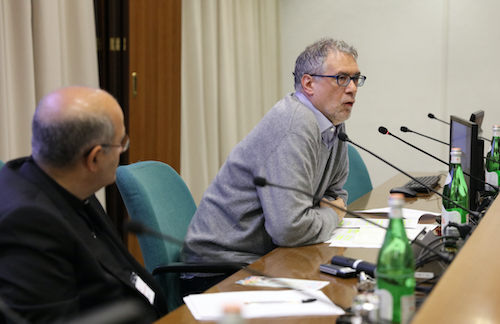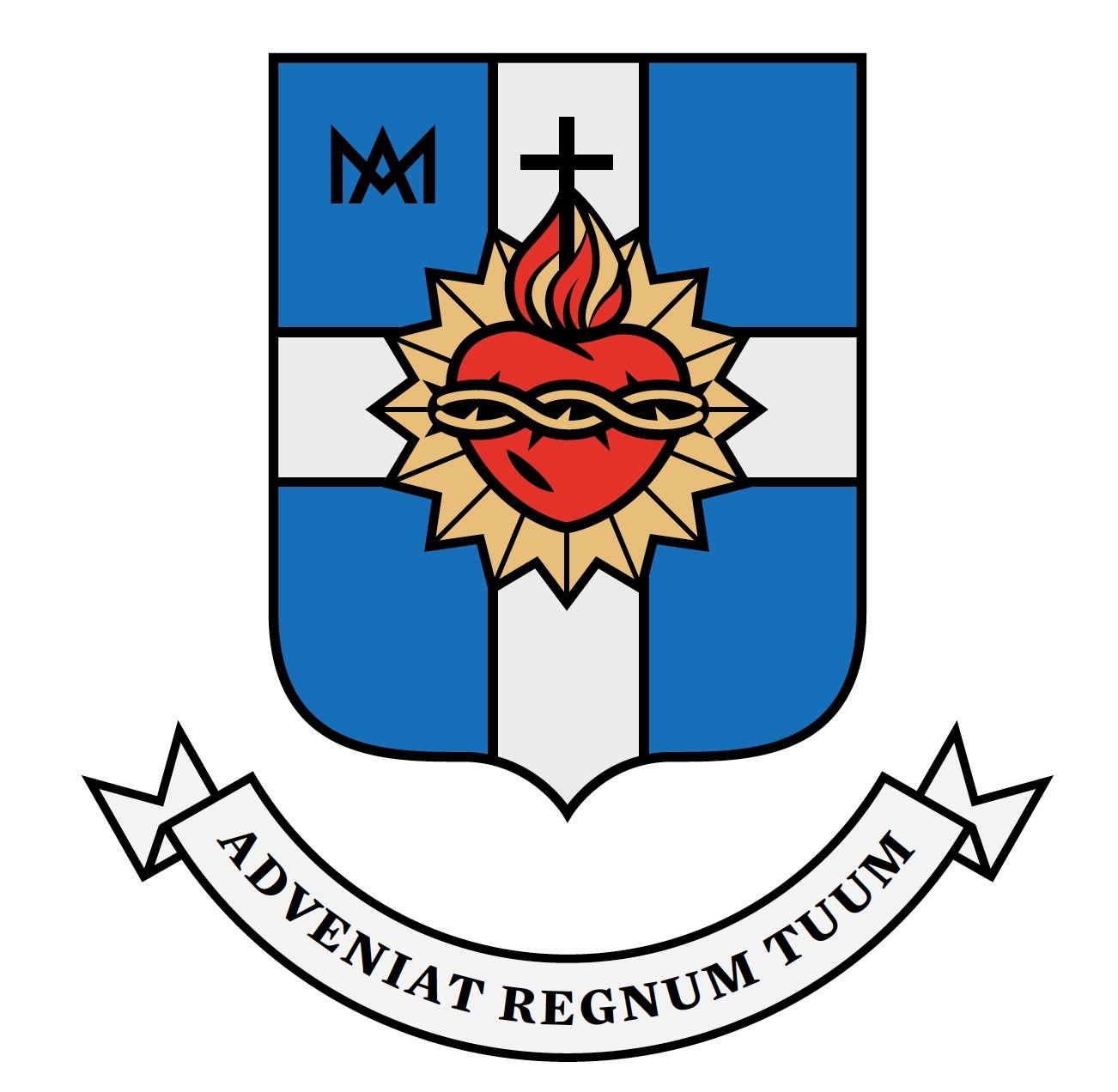
The General Curia of the Dehonians held an international conference titled “Sacred Heart Devotion; Memory – Body – Image – Text: Continuities and Discontinuities” (Rome, 8-9 November). The conference came about through collaboration between the congregation’s Centro Studi Dehoniani (Dehon Study Center) and the Pädagogische Hochschule of Lucerne, organized by Professor Franziska Metzger and Fr. Stefan Tertünte, SCJ. The seminar was characterized by an interdisciplinary and intercultural approach to the theme of devotion to the Sacred Heart, emphasizing in particular the dimensions of memory and images linked to it.
The impression left by the contributions [1] that built the basic framework of the international colloquium on Sacred Heart devotion was that of a dissemination, in part, unexpected in its multiple ramifications of imagination and devotional traditions. In essence, what the various presentations have shown is a true transmigration of a devotion strongly linked to Catholic tradition but also in very broad and diverse areas of culture and modern civilization that go beyond Europe.
A devotion and its events
The vicissitudes of a particular devotion intersect with an imagery and a memory that exceed it while at the same time accompany it. There was a review of the many connections that have allowed the devotion’s articulation and development while at the same time noting that the devotion to the Sacred Heart was no longer exclusive of European Catholicism.
The identification of parallel elements of configuration, such as sudden deviations from devotional traditions, represent, in fact, one of the peculiar traits exhibited by the colloquium. Art, politics, history, practice, memories, depictions of imagery, anthropology, sacred text and common textuality all have contributed to establishing the public destiny and spirituality of this devotion. In the continuous exchange of questions and answers, the complex form of the devotion of the Sacred Heart was again and again reiterated.
In this overflowing and socio-cultural transversality, clearly highlighted by the work of the colloquium, Sacred Heart devotion still seems to have the strength to act as a catalyst for multiple synchronic and diachronic dispersions. And this, today, when within the same Catholicism it can seem to be reduced to little more than a light barely kept alive by some congregations of religious congregations who cannot help but come to terms with it.
The colloquium carried the warning that the Church should not precipitously throw overboard the “memory” of its own historical path, even when this does not seem any longer to have the same impact as before. At the same time, it extended an invitation to cultivate the memory that knows how to address all the ambivalence, shadow and potentiality within it. Therefore, devotion to the Sacred Heart should be neither forgotten, nor be simply redrawn through some cosmetic adaptations of its captivating traits.
Tomorrow’s devotion to the Sacred Heart
In the summary that concluded the two days of intense work, Professor Metzger [2] outlined a series of perspectives illuminated by the colloquium, which could become the backbone of further research into Sacred Heart devotion. I will take up some of these perspectives to share with the readers of SettimanaNews.
From a methodological point of view, the colloquium provided a forum to radically question the mechanism of binary separation which is one of the typical constants of European modernity. This concerns alternatives such as image and language, the public dimension and religious space, affects and reason, materiality and the spiritual, etc. The practices, policies, political dimensions and imagery of this so typically modern devotion push, instead, towards a careful consideration of the complexity and versatility of the cultural phenomena, which also has a religious character. Phenomena that have repercussions on everyday life should not be reduced to a unique canon because they form a body that gives shape while at the same time they are being shaped by everyday life.
Another methodological aspect put forward by the colloquium was the importance of focusing on the practical and effective functions of devotion to the Sacred Heart as a symbol / ritual object / force that produces practices and rituals, language, narrations and memories. With a stratification of the meanings of the same devotion that is on modeled on the areas of its implementation, it can never be fully contained in the manner of its use by the Church as an institution. We are addressing devotion to the Sacred Heart as a markedly institutionalized (Catholic) devotion on the one hand, and as a widespread, popular devotion, on the other. The meaning that it assumes on one level is not the same as in another context.
This encourages transdisciplinary research which is able to follow the variations, adaptations, slippages and transformations of the devotion to the Sacred Heart – both synchronic and diachronic. Stabilization and changes of the interpenetrating devotional coordinates seek to be analyzed as such.
From an historical point of view it is possible to identify two key changes in regards to Sacred Heart devotion: the first is that which –– between 1500 – 1600 –– moved the Catholic Church to transition from the aridity of the immediate period following the post-Tridentine compaction of the Roman and curial ecclesiastical ranks. The second –– between the 19th and 20th centuries –– is when the invention of the modern state took on its distinctly nationalistic form, while devotion to the Sacred Heart became a mediating instrument which increasingly expressed the more marked distance between the liberal tradition of the modern state and the institution of Catholic faith.
Both turning points were characterized by extreme complexity. Despite the fact that devotion to the Sacred Heart functioned as a constraining factor, modernity continued to move on.
In her concluding notes Professor Metzger reviewed some major lines of the colloquium. One can grasp at customs from a reductive, univocal identification of reality, multiple and varied, of Sacred Heart devotion with the established form of Catholic intransigence typical of the end of the 1800s and the beginning of the 1900s. This also opened up new perspectives and responsibilities for Dehonian spirituality that continue to germinate in their specificity within the wider devotional tradition.
Father Dehon
Overall, the colloquium offered a whole series of possible openings for the spirituality of the Dehonian congregation. But, above all, it allowed us to grasp a certain convergence around the need to enhance the foundational spiritual experience of Dehon with regard to a public presence of the Dehonian communities in the Church and in today’s societies. In short, it dissolves some of the prejudicial “reserves” of some major figures of the spiritual heritage of Fr. Dehon, which affected, in a large part, his post-conciliar reception within the Congregation.
There seemed to be three major aspects which functioned as inspirational keys: reactivation of the theological value of the imagination (N. Steeves), the configuration of an affective grammar of experience (Cardinal J. Tolentino Mendosa), and the public ethics of justice (J. van den Hengel), which focused on the injunctive character of the other that forms the configuration of the available subject to recognize a force from which one cannot be either the owner or author, by appreciating the value of the first person, who is his or her singularity.
For the Dehonian Congregation, therefore, the colloquium re-launched the social, civil and political dimensions that can be looked at differently in the actual contexts of the life of the communities, starting from points greater than one’s spirituality and practices. Finding the appropriate forms to make this exercise fruitful was a task left by the colloquium in the hands of the Congregation, knowing that it doesn’t have to do it all because the Congregation can count on a whole series of approaches and links that can support it in this relaunch and review of its own spirituality.
____________
[1] The reports were held by: F. Metzger (Lucerne); E. Pahud de Mortanges (Freiburg); D. Morgan (Duke University); A. Viola (Trento); S. Laube (Berlin); D. Sidler (Basel); M. Antonia Herradon Figueroa (Madrid); P. Airiau (Paris); F. Purwanto (Yogyakarta); S. Baier-D. Troxler (Lucerne); M. Neri (Modena-Milan); card. J. Tolentino Mendonça (Rome); J. van den Hengel (Ottawa); N. Steeves (Rome).
[2] I thank Professor Metzeger for making available to me her concluding remarks in which she outlined the central perspectives of possible work to do regarding devotion to the Sacred Heart in a contemporary context.


